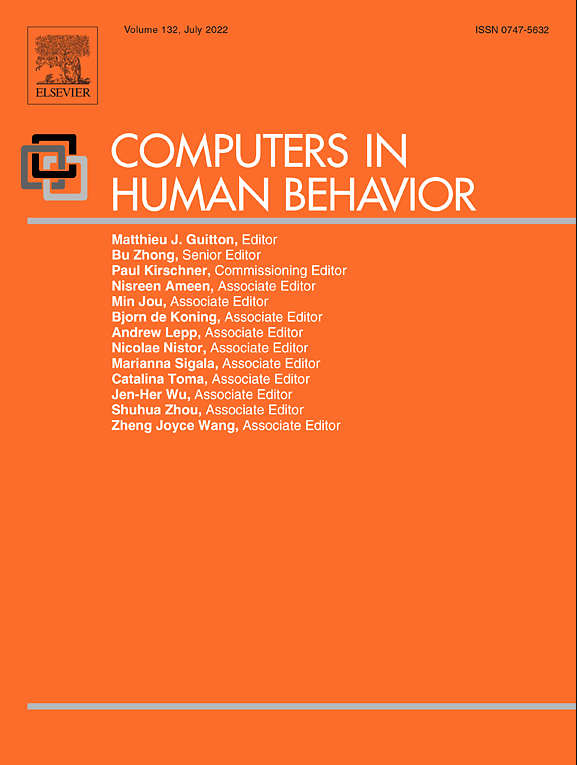Editorial Board / Publication information
Computers in human behavior: Special issue: Electronic games and personalised elearning processes
Effective message synchronization methods for multiplayer online games with maps
Unreal PowerPoint™: Immersing PowerPoint presentations in a virtual computer game engine world
Designing and analyzing collaboration in a scripted game for vocational education
A pen and speech-based storytelling system for Chinese children
A descriptive study of Turkish high school students’ game-playing characteristics and their considerations concerning the effects of games
Educational game design for online education
Exploring the link between teachers’ educational belief profiles and different types of computer use in the classroom
Communication goals and online persuasion: An empirical examination
An experimental assessment of semantic apprehension of graphical linguistics
Factor structure for Young’s Internet Addiction Test: A confirmatory study
The Computer Aversion, Attitudes, and Familiarity Index (CAAFI): A validity study
Multivariate effects of gender, ownership, and the frequency of use on computer anxiety among high school students
Shyness and the internet: Social problem or panacea?
Development and validation of a computer attitude measure for young students (CAMYS)
Using multimedia to teach inservice teachers: Impacts on learning, application, and retention
Spatial updating of objects after rotational and translational body movements in virtual environments
Predicting knowledge sharing practices through intention: A test of competing models
An examination of disposition, motivation, and involvement in the new technology context computers in human behavior
Interface agents as social models for female students: The effects of agent visual presence and appearance on female students’ attitudes and beliefs
Relationship between the level of intimacy and lurking in online social network services
Interface design and emotions experienced on B2C Web sites: Empirical testing of a research model
The roles of personality and class size in student attitudes toward individual response technology
Security lapses and the omission of information security measures: A threat control model and empirical test
Culture, gender and information technology use: A comparison of Chinese and US children
The effect of innovativeness on the adoption of B2C e-commerce: A model based on the Theory of Planned Behaviour
Open source content contributors’ response to free-riding: The effect of personality and context
Implicit learning as a design strategy for learning games: Alert Hockey
Contextual multi-dimensional browsing
Development, content, process and outcome of an online peer supervision group for counselor trainees
Learning multiplication through computer-assisted learning activities
Cultural divide and the Internet
The impact of customer interface quality, satisfaction and switching costs on e-loyalty: Internet experience as a moderator
Cross-cultural deception in social networking sites and face-to-face communication
Social facilitation and human–computer interaction
Social impact in technologically-mediated communication: An examination of online influence
Online recruiting: The effects of organizational familiarity, website usability, and website attractiveness on viewers’ impressions of organizations
Technostress under different organizational environments: An empirical investigation
Virtual social interactions: Evolutionary, social psychological and technological perspectives
Internet addiction: Meta-synthesis of qualitative research for the decade 1996–2006
The role of spatial abilities and age in performance in an auditory computer navigation task
Psychologist treatment recommendations for Internet-based therapeutic interventions
Corrigendum to: “The role of the idea champion in innovation: The case of the Internet in the mid-1990s” [Computers in Human Behavior 24 (2008) 451–461]


